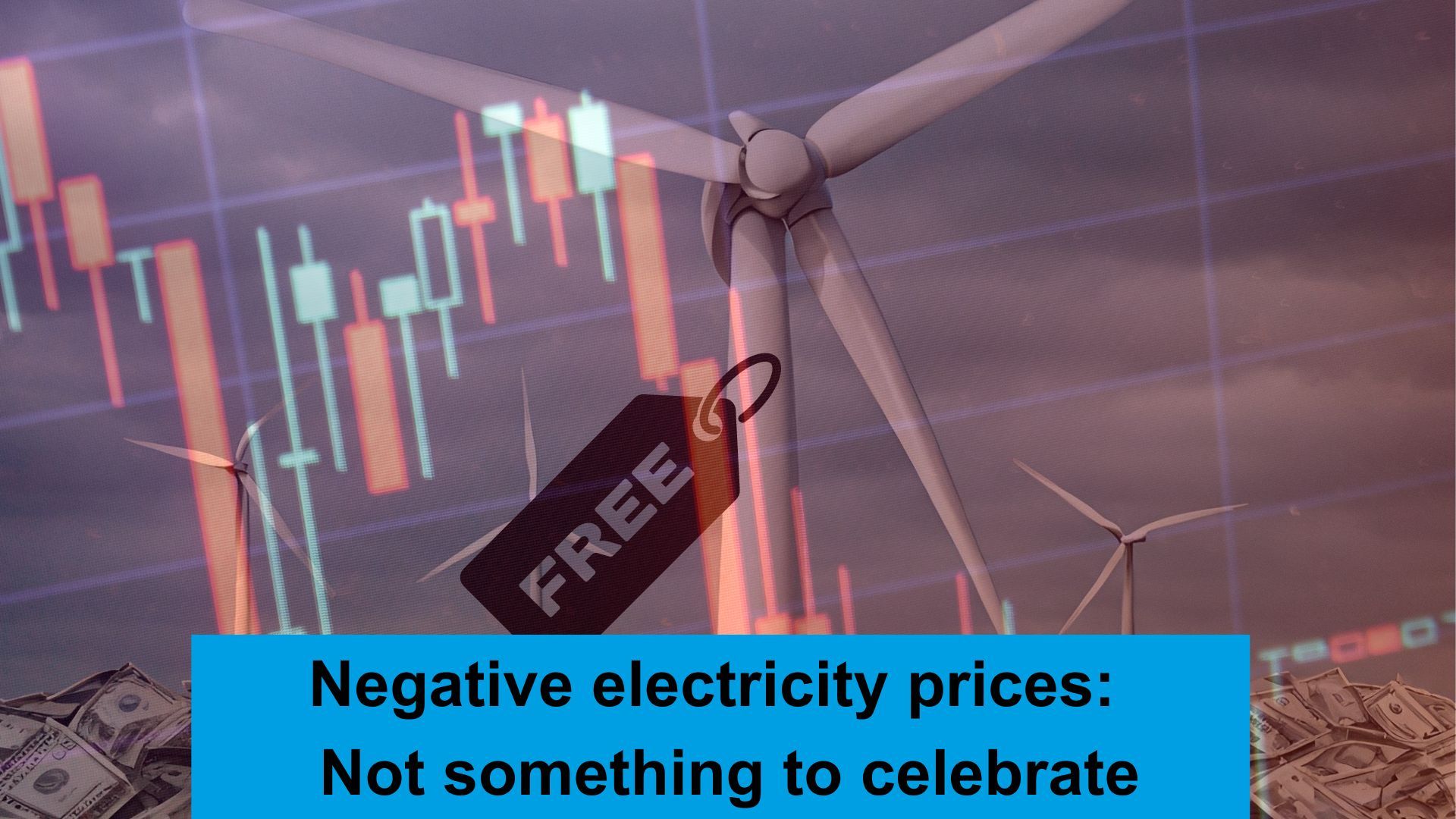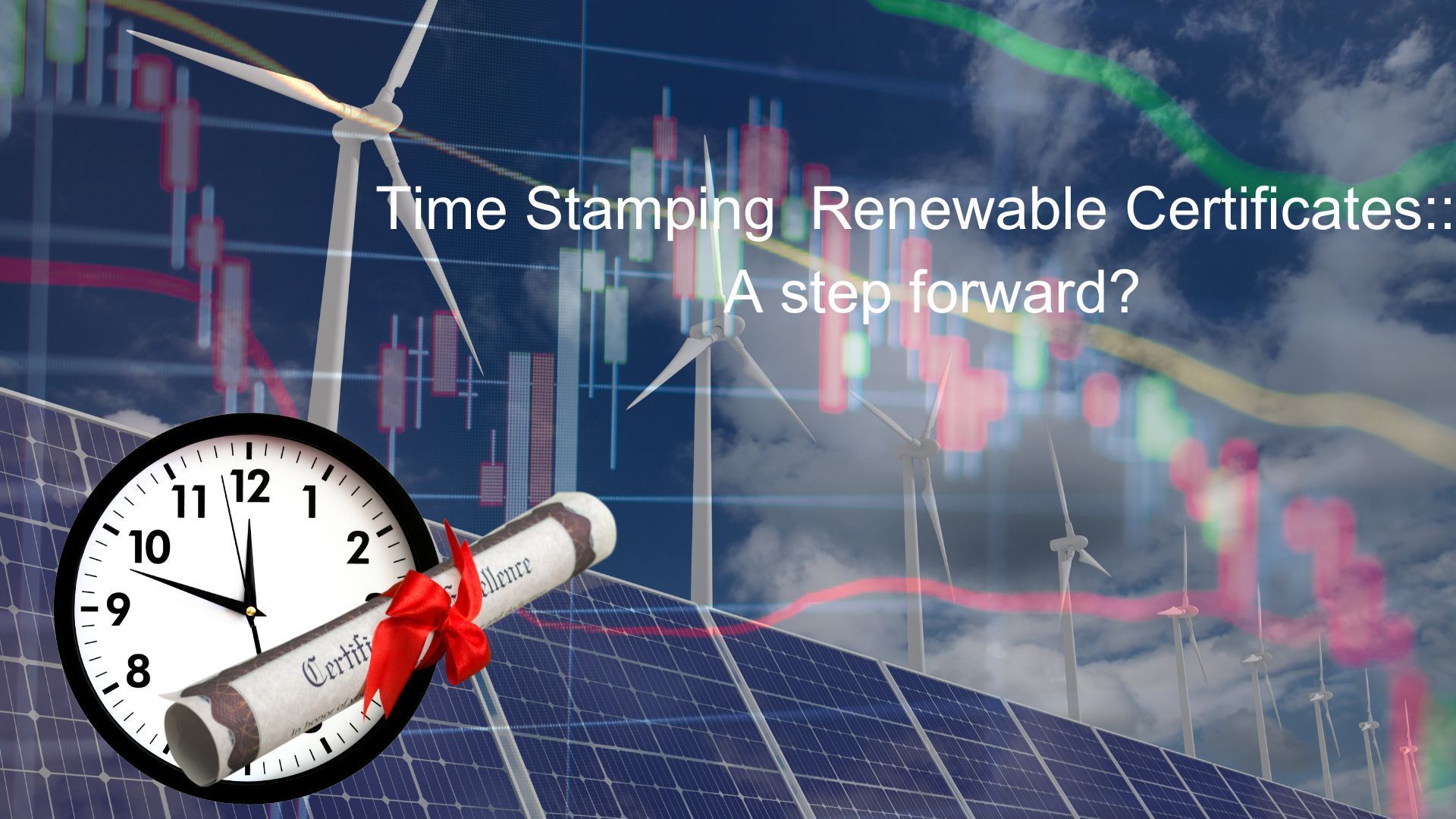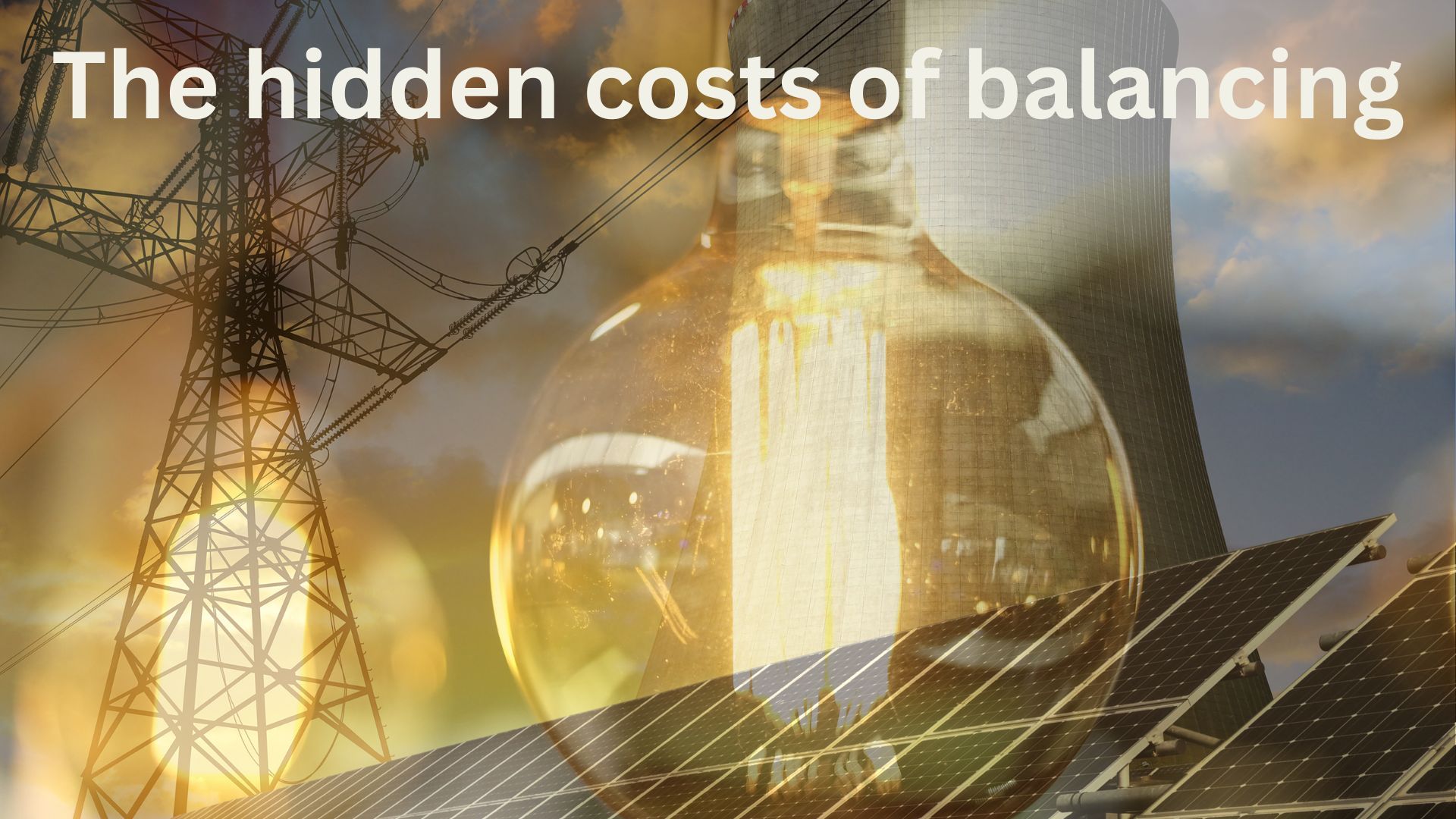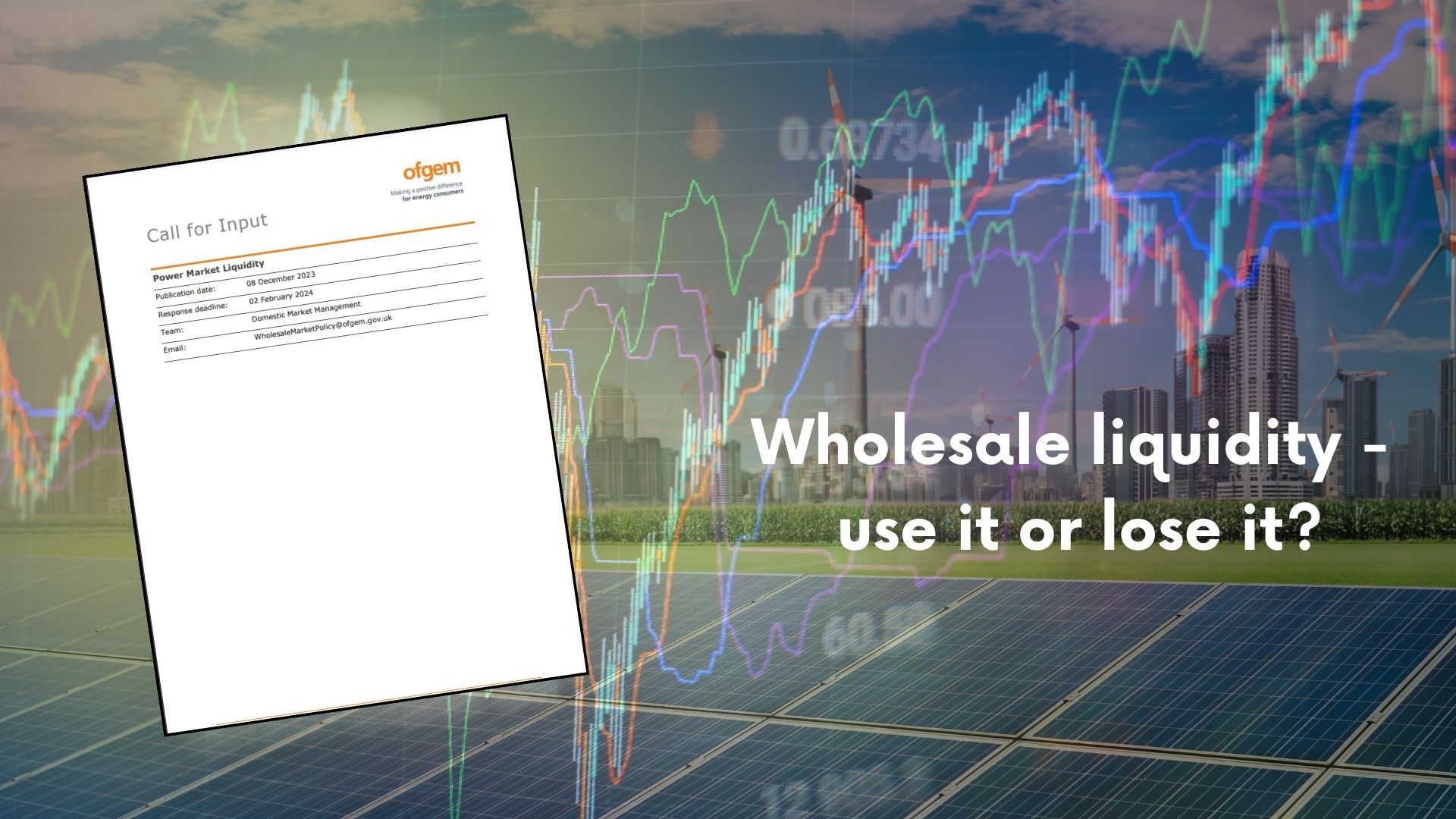Recent negative prices should not be seen as a good sign for the future

Electricity prices should never be negative.
In a sensible world, no business would ever pay a third party to take away its products.
The same is true in electricity markets.
In recent weeks the number of periods with electricity prices below zero has been headline news. High winds, sun, and associated low demand create more generation that wants to operate than there is demand to take away.
𝑾𝒉𝒂𝒕 𝒄𝒂𝒖𝒔𝒆𝒔 𝒏𝒆𝒈𝒂𝒕𝒊𝒗𝒆 𝒑𝒓𝒊𝒄𝒆𝒔?
The driving force behind negative prices is poor policy design which places very strong incentives on some generators to produce as much as possible in all circumstances. Everybody pays for it in one form or another, through what is termed price ‘cannibalisation’ as generation starts competing with itself to avoid being turned off.
The operation of some subsidy schemes means that generators getting paid through alternative non-energy market routes are willing to pay not to be switched off.
While most generators will have forward sold their output a at a fixed positive price, the larger ones are still obligated to submit prices to National Grid to allow it to turn them up or down in real time in order to balance the system.
As most subsidy schemes are blind to the market price of electricity they simply pay the generator a fee for every unit produced – so staying on is critical.
When renewable generation was small, the impact was negligible; now on windy summer days there is more generation than can be absorbed.
This means that generators may be willing to pay to stay on.
As long as they are paying less to stay on than the subsidy they are being paid, it’s a net win. With subsidy payments of almost £65/MWh for Renewable Obligation backed generation the desire to generate remains strong as prices fall.
𝐖𝐡𝐚𝐭’𝐬 𝐰𝐫𝐨𝐧𝐠 𝐰𝐢𝐭𝐡 𝐧𝐞𝐠𝐚𝐭𝐢𝐯𝐞 𝐩𝐫𝐢𝐜𝐞𝐬?
In practice negative prices end up costing end users more in the long run:
The spread in value between negative times and peak times increases. This value is captured by storage, and the the most flexible consumers. Other consumers will end up paying more for shaped electricity due to the risks of demand in the ‘wrong’ period. However, there are proponents of this that see it as nudging customer behaviour in a positive way.
Existing generators will see lower PPA prices at the time of contract renewal, as negative prices will be factored into any price offers.
New generators that may be exposed to negative prices demand more certainty of return to manage the cannibalisation risk. The capital cost is the same, so in reality the income required is the same. This is passed to customers through a higher starting cost than would have otherwise been the case.
These complex issues are beginning to impact all sides of the market. Being aware of them and ready to act will create long term value.
𝐈𝐬 𝐭𝐡𝐞𝐫𝐞 𝐚 𝐬𝐨𝐥𝐮𝐭𝐢𝐨𝐧 𝐭𝐨 𝐧𝐞𝐠𝐚𝐭𝐢𝐯𝐞 𝐩𝐫𝐢𝐜𝐞𝐬?
As always – yes, but it would involve a policy shift.
The simplest solution – although not popular in the media or the more vociferous industry commentators – would be to increase the fixed costs paid by consumers, pay generators a fixed capacity income and share the electricity produced across all users.
This would avoid customer risk premia, and provide investors with security of income – at the expense of allowing some to benefit significantly.
Share this on social media










